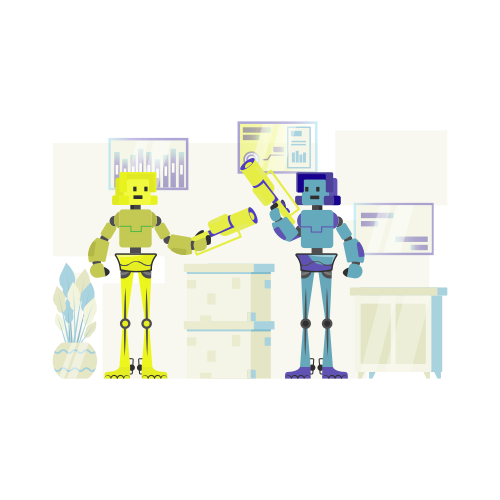The Problem with Autonomous Agents—and How Blueprint Solves It
As enterprise interest in AI agents continues to surge, so too does the realization that most organizations aren't getting the results they hoped for. The promises were big—autonomous agents that could streamline work, reduce manual effort, and drive real business outcomes. But the reality has been more complicated.
Instead of fewer tasks and more time saved, many companies are dealing with agent sprawl—a proliferation of experimental AI tools that are inconsistent, opaque, and difficult to govern. As CIO.com notes, these agents often “lack visibility, governance, and security controls,” and tend to operate more like isolated side projects than integrated enterprise tools. This isn’t just a technical problem—it’s a trust problem.
The Problem with Agents Today
Tools like Microsoft Copilot have enormous potential. But in practice, they’re often disconnected from the systems, automations, and data structures that organizations already rely on. They're asked to reason, improvise, or guess their way through tasks that demand precision and consistency. The result? Mistakes, dropped handoffs, and a general sense of unreliability.
When teams can’t trust agents to follow through accurately, they don’t use them—or worse, they do and regret it.
This lack of trust isn’t just anecdotal. It stems from agents’ fundamental limitations: they’re great at generating content or suggestions, but not great at actually doing the work. Especially when that work involves structured, repeatable processes.
A Smarter Way Forward: Connect Agents to Proven Automations
This is where Blueprint offers a different approach—one that isn’t about reinventing the wheel, but connecting agents to what already works.
Instead of relying on agents to generate tasks on the fly, Blueprint allows organizations to plug their existing Power Automate Desktop (PAD) flows directly into Microsoft Copilot. That means agents aren’t guessing—they’re executing proven, governed automations that already exist in your environment.
It’s a small shift with a big impact: instead of hoping agents perform as expected, you know they will—because the logic they follow has already been tested, maintained, and trusted.
Avoiding the Pitfalls of Agent Sprawl
Rather than creating new, one-off agent solutions that further fragment the automation landscape, Blueprint helps consolidate and centralize how automations are used within AI interfaces. It acts as a connective layer between agent interfaces and the underlying workflows they need to trigger—reducing duplication, increasing accuracy, and eliminating the guesswork.
In doing so, it tackles two key risks highlighted in the CIO article:
-
Governance and visibility: Agents gain access to centrally maintained automations with built-in controls and oversight.
-
Operational sprawl: Instead of launching agents that act in isolation, organizations can scale more intelligently—reusing what already works.
The Bottom Line
AI agents aren’t going away. But to unlock their potential, they need guardrails, context, and access to trusted systems of execution. Blueprint delivers exactly that—quietly reinforcing agent interfaces with battle-tested automation.
It’s not about hype. It’s about building a foundation you can trust.
Get the Full Overview
Want to see precisely how Blueprint enhances Microsoft Copilot agents, and what it looks like in action?
Download the datasheet to learn how it works, what’s included, and why companies are turning to Blueprint to scale automation with confidence.
Share this
Recent Stories

Governance for AI Agents: How to Keep Autonomy from Becoming Anarchy
When Does It Make Sense to Use AI Agents in Enterprise Automation?


